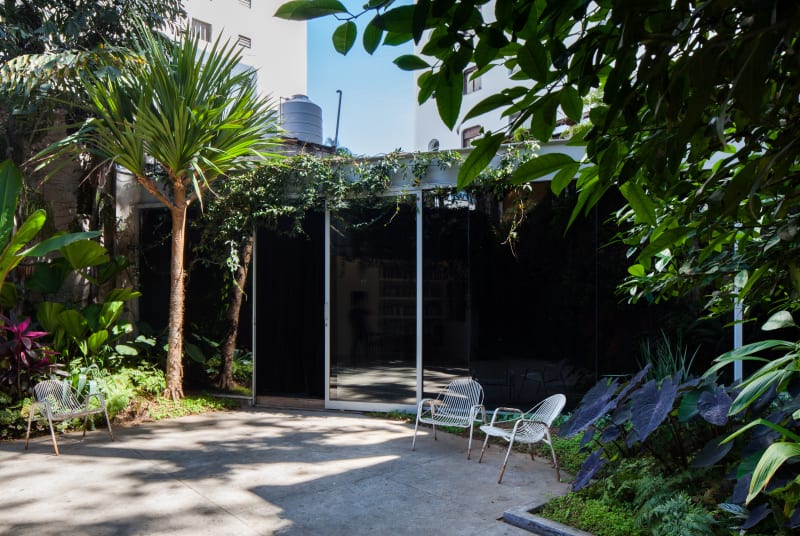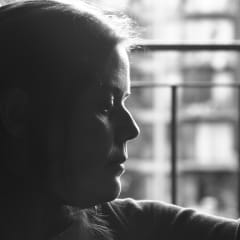VOSTOK – Screening #1 Letícia Ramos
This type of literature that mixes fiction and science dates back to the 17th century, more precisely to the studies by Edmund Halley, who claimed the Earth was hollow, and that there were three other spheres within it. Inside these spheres there would be new forms of life, which were not aware of the existence of entities in the larger spheres. It would be up to the external beings, in that case, humans, to dig holes andaccess them. One century later, the mathematician Euler came up with another theory, stating that there were no multiple spheres inside the earth, but only one hollow sphere, and that superior forms of life lived inside it. These two theories were the base for studies that founded the book механика скрытойвселенной, Mechanics of the Hidden World, by the Russian scientist Ivan Korolenko.
Not by accident, a copy of this book was found in a time capsule that Soviets implanted in the ocean through a Russian bathyscaphe, in the 20th century, which would only be found in 2050. It is very likely that this publication also served as inspiration for expeditions of a Soviet micro-submarine, which was theonly submersible able to go deeper than 100,000 feet.
In one of its missions, the submarine was sent to the Antarctic, aiming to explore a murky lake that had been frozen for thousands of years. The recent increase in global temperatures revealed the lake, which was named VOSTOK. There, life would be different, because Soviet scientists believed that such a lake could conserve a prehistoric world, maintaining forms of life that had never been seen before.The film VOSTOK, by Letícia Ramos, recounts a little of this story: an element of a complex network ofproofs and documents that confirm the existence of a place we are not familiar with yet. The ground of prehistoric waters, then, is captured by the submarine built by the artist, reminding us of Soviet explorations. By manipulating image tools, Letícia can extract from the infra-mince the most sensitive of the remarkable. And here, by looking at references left for us by photography, I remember only a few similar cases. Some examples are the paranormal experiences by the North American Ted Serios, with a camera that took pictures of thoughts; the studies by the Russians Semyon and Valentina Kirlian, who created a machine to register the energy surrounding our body; the device built by the German Augusto Mayer, a machine that was able to capture the energy spheres our hands emanate; the melancholic Optogram, by Dr. Vernois, who could record the last image seen by the retina of the dead; and, finally, the unlikely equipment invented by the French Hippolyte Baraduc: a huge camera without lenses that was able to take photographs of God.
It is uncertain whether or not these devices really existed, but their images show us that faith is not only a system of belief based on the unlikely. Moreover, it goes where science finds tricks and where magic faces the cinema. In these fields, there are invisible lines drawing them apart, at once bringing them together at the same time. If we demand proof of scientific theories and postulates, document records and practical experiences will show us an example of these metafictions. And for those who doubt the Hollow Earth treaty, it is worth a visit to the Academy of Natural Sciences of Philadelphia which safeguards the model of this world, designed in the 19th century by J. Cleves Symmes. Or, if nearby, it is worth a visit to the Aquarium built by Letícia Ramos. These two constructs are otherways of exemplifying theories that require no confirmation, such as cinema, literature and even history. Therefore, there will be no doubts regarding experiments that invent the world inside the world itself, be it filled with air or taken by water.
Leticia Ramos was born in 1976, Santo Antônio da Patrulha, Brazil. She lives and works in São Paulo, Brazil. Winner of the award Prêmio BES Photo 2014, Leticia Ramos solo exhibitions include, VOSTOK – Um prólogo, Pivô, São Paulo, Brazil, 2013; Bitácora, Mendes Wood DM, São Paulo, Brazil, 2012; Escafandro, La Bande Video, Quebéc, Canada, 2011; ERBF – Estação Radiobase Fotográfica, Centro Cultural São Paulo, São Paulo, Brazil, 2009/2010. Group exhibitions include Museu Coleção Berardo, Lisbon, Portugal, 2014; 18º Festival de Arte Contemporânea Sesc Videobrasil – Panoramas do Sul, Sesc Pompéia, São Paulo, Brazil, 2013; Expo Projeção 1973-2013, Sesc Pinheiros, São Paulo, Brazil, 2013; Se o clima for favorável / Wheather permitting... 9ª Bienal do Mercosul, Porto Alegre, Brazil, 2013; Programa de Fotografia, Centro Cultural São Paulo, São Paulo, Brazil, 2012; Trilhas do Desejo, Rumos Artes Visuais, Itaú Cultural, São Paulo, Brazil, 2009.
Michel Zózimo was born in 1976, in Santa Maria, Brasil. Artist and Professor of Fine Arts, Zózimo lives and works in Porto Alegre.
– Michel Zózimo


